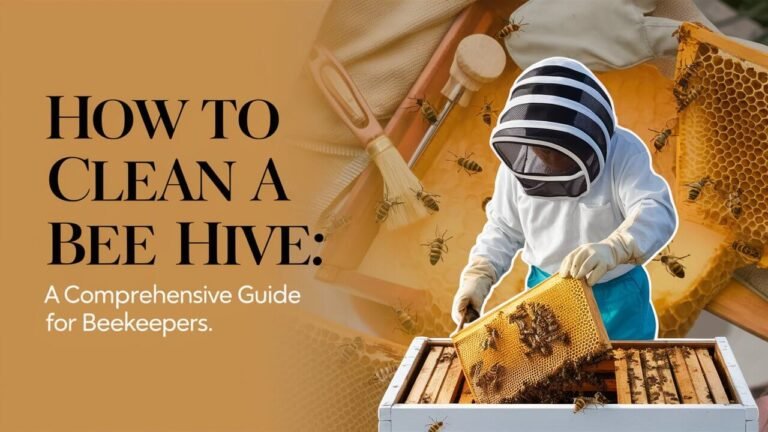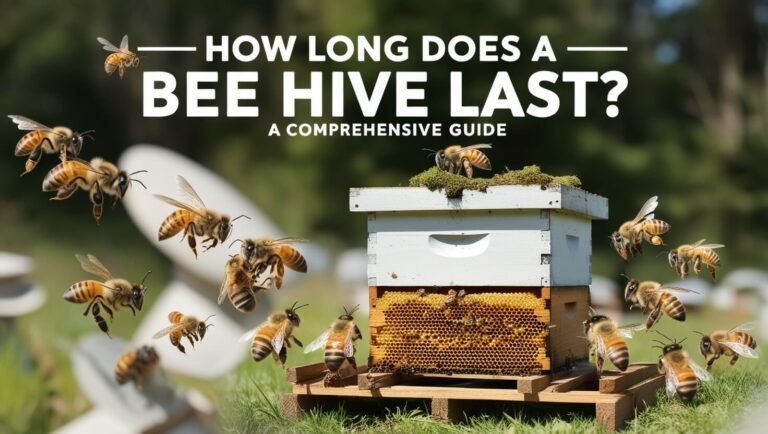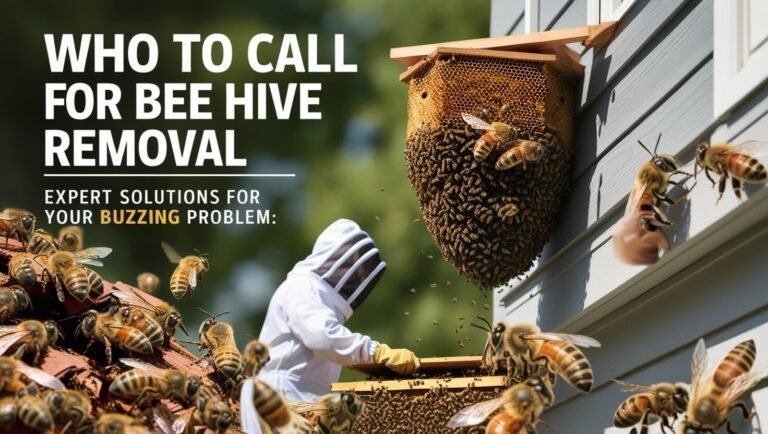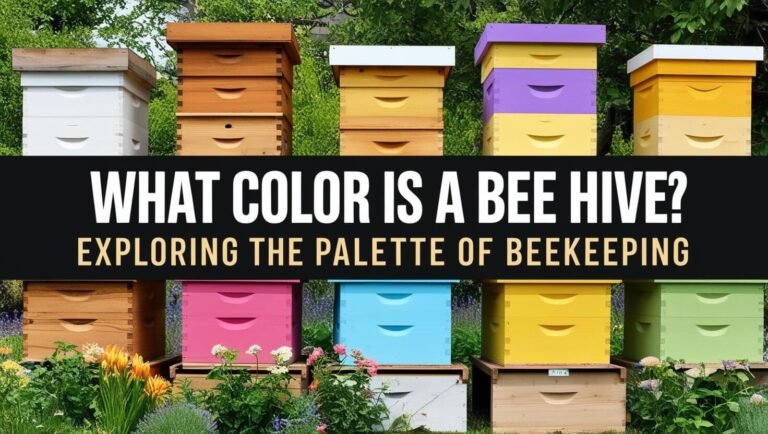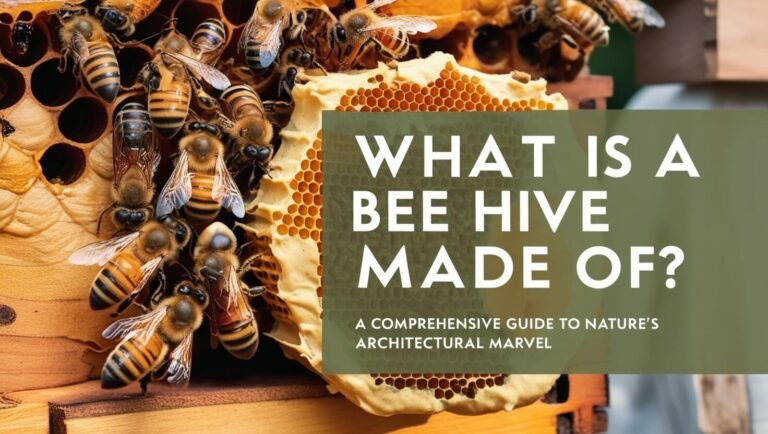How a Bee Hive Works: The Fascinating World of Honey Bees
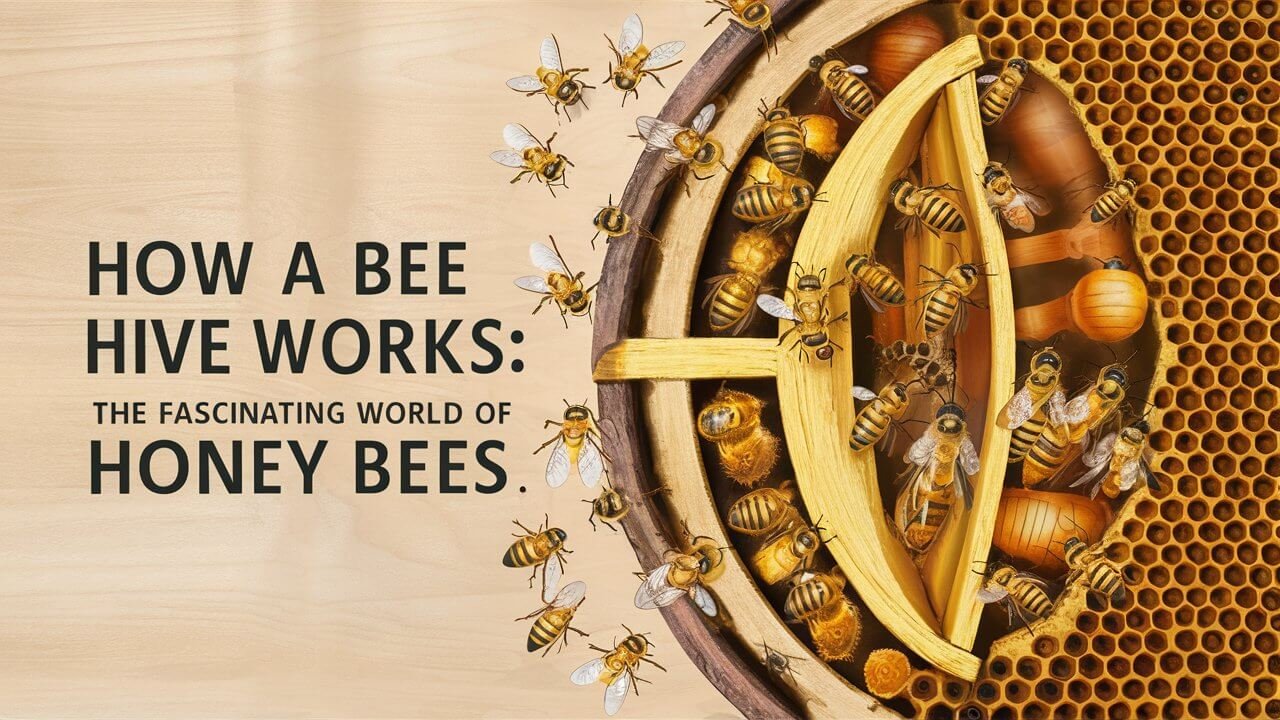
A bee hive is an incredible feat of nature, buzzing with activity and purpose. It’s a complex system where thousands of bees work together to create a thriving colony. But how exactly does a bee hive work? In this article, we’ll dive deep into the inner workings of a bee hive, exploring everything from its structure to the roles of different bees and the amazing process of honey production.
The Structure of a Bee Hive
Before we delve into how a bee hive functions, let’s look at its basic structure. Understanding the physical layout of a hive is crucial to grasping how bees live and work.
Natural vs. Man-made Hives
Bees can create their homes in various locations. In the wild, they often choose hollow trees, rock crevices, or even spaces within buildings. However, beekeepers provide man-made hives to house and manage bee colonies.
Wild hives and man-made hives share similar internal structures. The main difference lies in the outer shell. Natural hives adapt to their surroundings, while man-made hives have a standardized design for easy management.
Components of a Hive
Whether natural or man-made, a bee hive consists of several key components:
- Outer covering: This protects the colony from the elements.
- Frames: These provide a structure for bees to build their combs.
- Honeycomb: The heart of the hive, where bees store honey, pollen, and raise their young.
- Entrance: A small opening allowing bees to come and go.
In man-made hives, beekeepers often add extra features like removable frames and separate sections for honey collection.
The Importance of Hexagonal Cells
One of the most fascinating aspects of a bee hive is the honeycomb structure. Bees build their combs using hexagonal cells, and this shape isn’t random. Hexagons are the most efficient shape for storage, using the least amount of wax while providing maximum strength.
These cells serve multiple purposes:
- Storing honey and pollen
- Raising young bees (brood cells)
- Providing a living space for adult bees
The precision with which bees construct these cells is remarkable. They build about 25 perfectly shaped hexagonal cells per square inch of comb.
The Bee Colony: Roles and Responsibilities
A bee hive isn’t just a structure; it’s a bustling community. Let’s explore the different types of bees that make up this society and their unique roles.
The Queen Bee: Leader of the Hive
At the heart of every bee colony is the queen bee. She’s not just a figurehead; the queen plays a crucial role in the hive’s survival and growth.
Key facts about the queen bee:
- She’s the only fully developed female in the hive.
- Her primary job is laying eggs – up to 2,000 per day!
- She produces pheromones that regulate hive activity.
- A queen can live for 1-2 years on average.
The queen’s pheromones give each hive a unique scent. This helps bees recognize their home and alerts them if something’s wrong with their queen.
Worker Bees: The Backbone of the Colony
Worker bees are all female and make up the majority of the hive’s population. These industrious insects perform a wide range of tasks essential to the hive’s survival.
Worker bees’ roles change as they age:
- Cleaning: Young workers start by cleaning the hive.
- Nursing: They then move on to feeding and caring for larvae.
- Building: Workers produce wax and construct honeycomb.
- Guarding: Some bees protect the hive entrance.
- Foraging: Older workers collect nectar, pollen, and water.
Worker bees live for about 5-7 weeks during busy seasons. Their short lives are packed with non-stop work for the good of the colony.
Drone Bees: The Male Bees
Drones are male bees with a very specific purpose – mating with queens from other colonies. They don’t gather food, defend the hive, or perform other tasks.
Interesting drone facts:
- They make up about 10-15% of the hive population.
- Drones die after mating.
- They’re larger than worker bees but smaller than the queen.
- Drones are expelled from the hive before winter to conserve resources.
The Life Cycle of Honey Bees
Understanding how bees develop helps us appreciate the constant cycle of life within a hive.
From Egg to Adult
The bee life cycle has four main stages:
- Egg: The queen lays eggs in cells.
- Larva: After 3 days, the egg hatches into a larva.
- Pupa: The larva spins a cocoon and transforms.
- Adult: The fully formed bee emerges.
The entire process takes about 21 days for worker bees, 24 days for drones, and 16 days for queens.
The Lifespan of Different Bee Types
Bee lifespans vary dramatically based on their role:
- Queens: 1-2 years on average, but can live up to 5 years.
- Workers: 5-7 weeks in summer, 4-6 months in winter.
- Drones: A few weeks to a few months, depending on the season.
This constant cycle of birth and death keeps the hive population balanced and productive.
How Bees Build Their Hive
The construction of a bee hive is an impressive feat of engineering. Let’s look at how bees create their intricate homes.
Wax Production
Bees produce wax from special glands on their abdomens. Young worker bees (12-17 days old) secrete wax scales, which they then chew and shape into the honeycomb structure.
Fun fact: It takes about 6 pounds of honey to produce 1 pound of wax!
Comb Construction
Building comb is a group effort. Bees form chains, passing wax from bee to bee until it reaches the construction site. They then mold the wax into the familiar hexagonal cells.
Bees build comb from the top down, starting at the highest point of their chosen space. They work quickly – a strong colony can build up to 2 pounds of comb per day!
Propolis: The Bee Glue
Bees collect a sticky resin from trees and plants, which they mix with wax to create propolis. This “bee glue” serves several purposes:
- Sealing small gaps in the hive
- Smoothing rough surfaces
- Providing antimicrobial protection
Propolis helps keep the hive clean and structurally sound.
The Inner Workings of a Bee Hive
A bee hive is more than just a structure; it’s a finely tuned environment. Bees work tirelessly to maintain optimal conditions inside their home.
Temperature Regulation
Bees are masters of climate control. They keep their hive at a constant temperature of about 95°F (35°C), which is crucial for brood development and honey production.
How do they do it?
- In hot weather, bees fan their wings to create airflow.
- They also spread water droplets around the hive to cool it through evaporation.
- In cold weather, bees cluster together, using their body heat to warm the hive.
Ventilation and Humidity Control
Proper ventilation is vital for a healthy hive. Bees maintain about 50-60% humidity, which is ideal for honey production and brood rearing.
Bees create airflow by:
- Fanning their wings at the hive entrance
- Leaving small gaps between combs for air circulation
Cleaning and Maintenance
Bees are meticulous housekeepers. They regularly clean cells, remove debris, and even carry out dead bees to maintain a hygienic environment.
Young worker bees are primarily responsible for these cleaning tasks. They ensure that the hive remains free from mold, parasites, and other potential health threats.
Honey Production in the Hive
The production of honey is perhaps the most well-known function of a bee hive. Let’s explore this fascinating process.
Nectar Collection
Forager bees fly out to collect nectar from flowers. They store this sweet liquid in their honey stomachs, separate from their digestive stomachs.
A single bee might visit 50-100 flowers in one trip!
The Process of Making Honey
Once back at the hive, the forager bee regurgitates the nectar to a house bee. This bee then passes it to another, and so on. This process adds enzymes that begin to break down the complex sugars in nectar.
The bees then deposit the nectar into honeycomb cells. They fan their wings to evaporate excess water, reducing the nectar to about 17-20% water content. This concentration of sugars prevents fermentation, creating the shelf-stable honey we know.
Honey Storage and Capping
When a cell is full of ripe honey, worker bees cap it with a thin layer of wax. This seals and protects the honey, keeping it fresh for future use.
A single bee produces only about 1/12 teaspoon of honey in its lifetime. It’s the collective effort of the entire colony that results in pounds of honey!
Pollen Collection and Storage
While honey gets a lot of attention, pollen is equally important for the hive’s survival.
The Importance of Pollen for Bees
Pollen is a crucial protein source for bees, especially for developing larvae. It contains essential amino acids, vitamins, and minerals that bees need to grow and stay healthy.
How Bees Collect and Store Pollen
Forager bees collect pollen on their hind legs in specially adapted “pollen baskets.” Back at the hive, they deposit the pollen into cells near the brood area.
House bees then pack the pollen tightly into the cells, adding a bit of honey and enzymes. This mixture, often called “bee bread,” ferments slightly, making the nutrients more accessible to the bees.
Communication in the Hive
Effective communication is key to the smooth operation of a bee hive. Bees have developed sophisticated ways to share information.
The Waggle Dance
One of the most fascinating forms of bee communication is the waggle dance. When a forager bee finds a good source of nectar or pollen, she performs this dance to tell other bees where to find it.
The dance conveys:
- Direction (relative to the sun’s position)
- Distance to the food source
- Quality of the food source
Other bees observe and interpret this dance, then fly out to the indicated location.
Pheromone Signals
Bees use various pheromones (chemical signals) to communicate within the hive. These scents can:
- Alert the colony to danger
- Signal the need for more food collection
- Indicate the health status of the queen
- Help bees recognize members of their own colony
These chemical messages help coordinate the activities of thousands of bees efficiently.
Defending the Hive
A bee hive contains valuable resources – honey, pollen, and the next generation of bees. Naturally, the colony has developed ways to protect itself.
Guard Bees and Their Role
Some worker bees take on the role of guards. They patrol the hive entrance, checking the identity of every bee that tries to enter. They can detect intruders by scent and will attack if necessary.
Guard bees also release alarm pheromones if they detect a threat, rallying other bees to defend the hive.
Stinging Mechanism
A bee’s stinger is its last line of defense. When a bee stings, the barbed stinger typically remains in the victim, continuing to pump venom. This is fatal for the bee, but it serves to protect the colony.
Interestingly, only female bees (workers and the queen) have stingers. Drones cannot sting.
The Yearly Cycle of a Bee Hive
A bee hive’s activities change with the seasons. Understanding this annual cycle helps us appreciate the adaptability of these insects.
Spring Build-up
As temperatures warm, the queen starts laying more eggs. The colony population grows rapidly. Bees focus on:
- Raising new bees
- Collecting nectar and pollen from spring flowers
- Expanding the comb
Summer Peak
Summer is the busiest time for bees. The colony reaches its maximum size, often housing 50,000-60,000 bees. Activities include:
- Intense foraging
- Honey production and storage
- Raising more brood
Fall Preparation
As flowers become scarce, bees prepare for winter:
- Foraging slows down
- Drones are expelled from the hive
- Bees collect propolis to seal gaps in the hive
Winter Survival
During cold months, bees cluster together to stay warm. They survive on stored honey, slowly moving through the hive to access food reserves.
The queen stops laying eggs, and the colony’s activity level drops significantly. Their main job now is to survive until spring.
Swarming: How Bee Colonies Reproduce
Swarming is how honey bee colonies reproduce. It’s a natural process that ensures the spread of bee populations.
Reasons for Swarming
Bees typically swarm when:
- The hive becomes overcrowded
- There’s a lack of space for the queen to lay eggs
- The colony is very healthy and can afford to split
The Swarming Process
- Worker bees create new queen cells.
- The old queen leaves with about half the worker bees.
- This swarm clusters nearby while scout bees search for a new home.
- Once a suitable location is found, the swarm moves in and starts building a new hive.
Meanwhile, back in the original hive, a new queen emerges and takes over, continuing the cycle of life.
Threats to Bee Hives
Despite their complex social structure and defenses, bee hives face numerous threats in today’s world.
Parasites and Diseases
Varroa mites are a significant problem for honey bees. These tiny parasites weaken bees and spread diseases. Other threats include:
- American foulbrood (a bacterial disease)
- Nosema (a fungal parasite)
- Various viruses
Environmental Challenges
Bees face several environmental pressures:
- Habitat loss due to urbanization and intensive agriculture
- Climate change affecting flowering patterns
- Exposure to pesticides and other chemicals
Human Impact
Human activities can both help and harm bee populations:
- Beekeeping practices can support bee health but can also spread diseases if not managed properly.
- Agricultural practices can provide abundant food sources but may also expose bees to harmful chemicals.
The Importance of Bee Hives in Ecosystems
Bee hives play a crucial role in our world, far beyond producing honey.
Pollination and Biodiversity
Bees are essential pollinators. As they collect nectar and pollen, they transfer pollen between flowers, enabling plant reproduction. This process is vital for:
- Maintaining plant biodiversity
- Supporting food chains in ecosystems
- Producing many of the fruits and vegetables we eat
Economic Impact of Honey Bees
The economic value of honey bees is enormous:
- They pollinate billions of dollars worth of crops annually.
- The honey industry provides livelihoods for many people.
- Other bee products like beeswax and propolis have various commercial uses.
Understanding how a bee hive works helps us appreciate these incredible insects and the critical role they play in our world.
Let’s Wind UP
From the intricate structure of the honeycomb to the complex social organization, a bee hive is truly a marvel of nature. Each bee plays a vital role, working tirelessly for the good of the colony. The hive operates as a superorganism, with thousands of individuals functioning as a single unit.
Understanding how a bee hive works not only satisfies our curiosity but also helps us appreciate the importance of these insects in our ecosystems and economy. It underscores the need to protect bee populations and their habitats.
Next time you see a bee buzzing from flower to flower, remember the fascinating world it comes from – a world of cooperation, efficiency, and purpose. The humble bee hive is a testament to the wonders of the natural world, reminding us of the intricate connections that sustain life on our planet.

